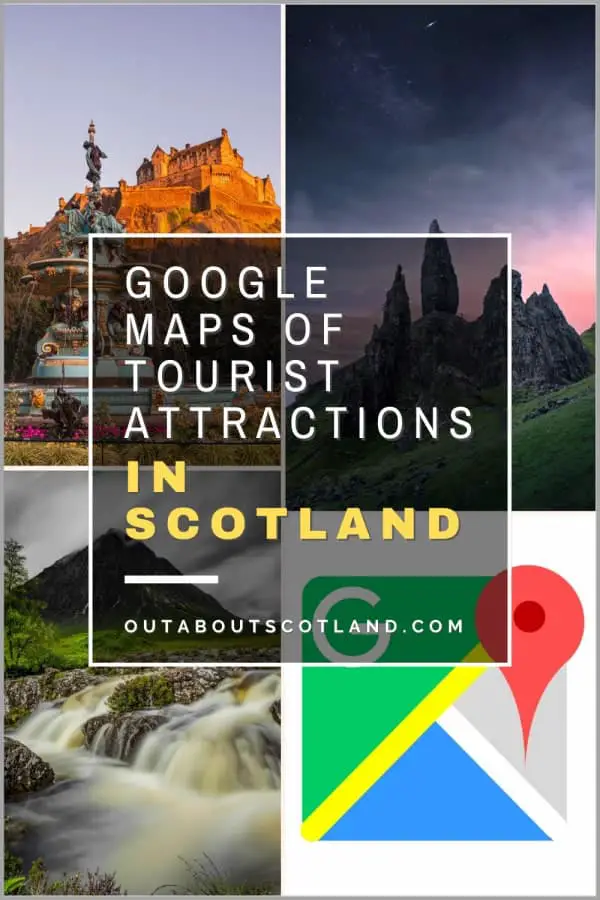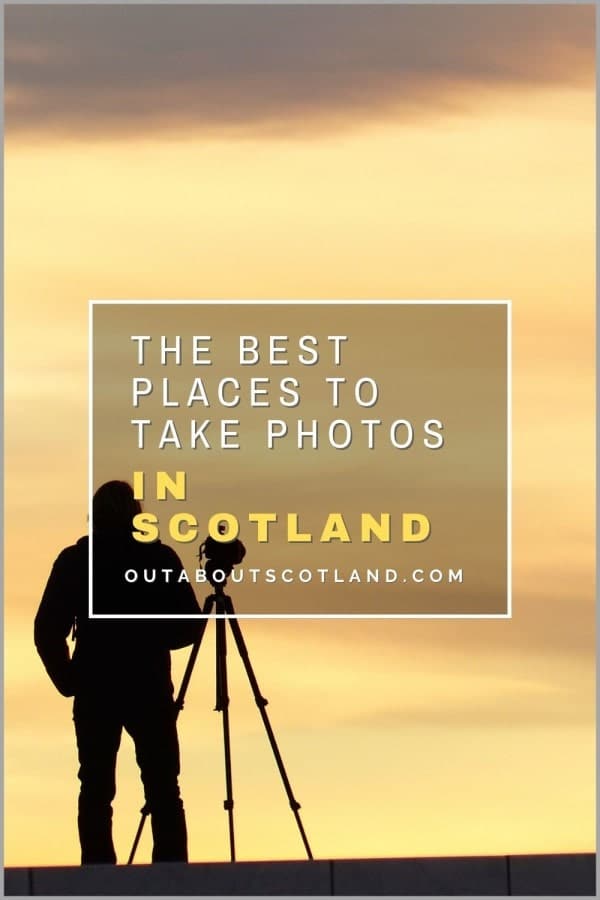There are lots of reasons to visit Scotland in January, including the fact that it’s much quieter than other months and it’s also cheaper, with hotel prices falling by half compared to the summer months. Perhaps best of all, though, tourist attractions in Scotland are blissfully free of crowds during the winter, and queues are virtually non-existent.
Discover the best things to see and do in Scotland in January in this ultimate guide, which includes overviews of the top winter attractions and tips on how to make the most of your visit.
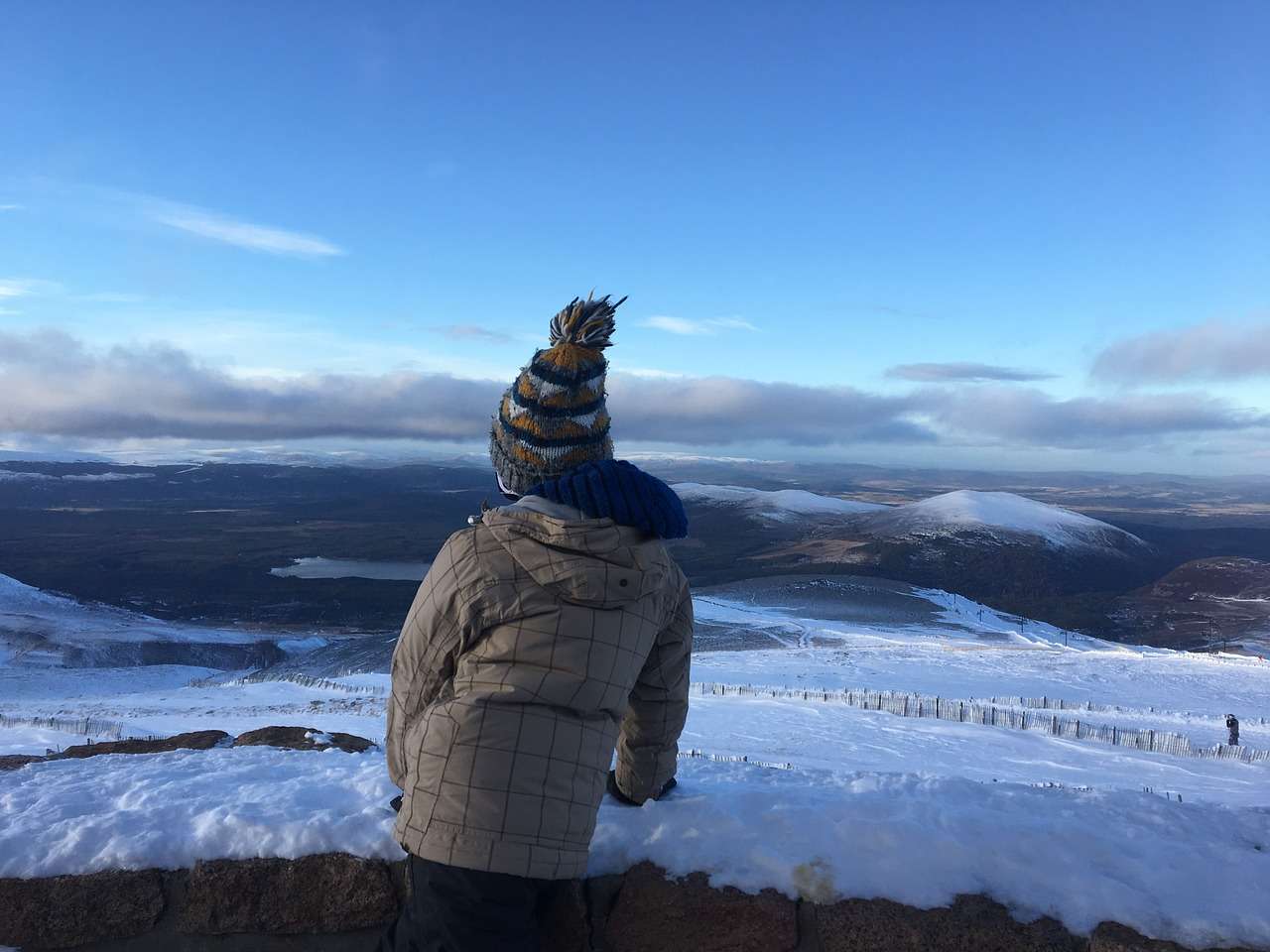
Edinburgh Castle
Out About Scotland visitor guide: Edinburgh Castle
It is a wonderful experience to travel to Edinburgh in January, especially when there’s a light dusting of snow covering the city’s historic attractions. There are so many places to visit in the city that it’s difficult to know where to start, but the ancient castle is usually the first port of call for first-time visitors.
If you have any interest in history, you should definitely visit this attraction because there has been a fort on the site for over 2,000 years, and Scotland’s royalty has used it for at least 1,000 years. The castle dominates the city skyline, where it sits perched at the very top of Castle Rock at the upper end of The Royal Mile, with the equally spectacular Holyrood Palace sitting at the bottom.
The castle encapsulates everything that’s great about the best Scottish attractions. It’s awe-inspiring, ancient, fascinating, situated in a stunning location, and has more things to see and do than you’ll be able to fit into a single visit.
The castle regularly draws more visitors per day than any other in Scotland, so in the summer the queues can be a complete nightmare, but if you visit in January, you’ll find there are hardly any queues at all.
While much of the castle is best seen from the outside there are enough rooms inside that you don’t need to brave the winter weather at all, and you could easily spend all afternoon just viewing the museums. There are interesting exhibitions to walk around, lots of artefacts to look at, cafés, a restaurant, and several gift shops. Basically, Edinburgh Castle rightly deserves its position as the nation’s number-one tourist attraction.
Protect Your Family From Scotland's Biting Midges
- Powerful, reliable protection for up to 8 hours
- Water- and sweat resistant
- Repels midges, mosquitoes, horse flies, sand flies, fleas and ticks
- Safe for use on adults, children over 30 months and pregnant women
- Non-sticky, moisturising with a pleasant fragrance
- Packaging may vary
Holyrood Palace
Out About Scotland visitor guide: Holyrood Palace
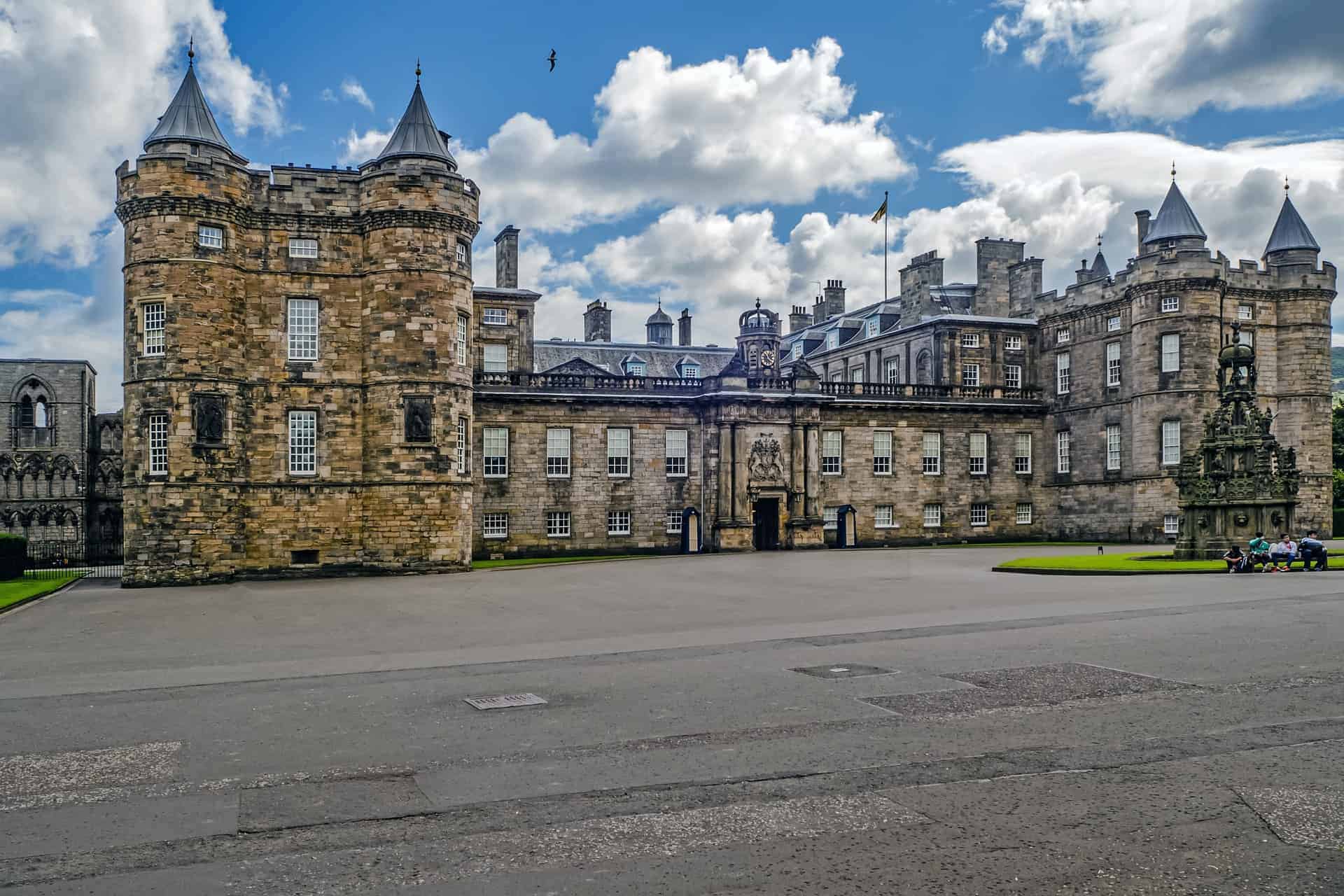
The palace of Holyrood House (as it’s officially known) is the main residence of the British monarchy in Scotland, and it’s arguably the grandest building in Edinburgh.
The palace is located at the bottom of The Royal Mile in the centre of Edinburgh’s Old Town, and it can be easily walked to after a visit to the castle at the top, but it also has two other attractions right on its doorstep. Directly across the road sits the architectural wonder of the Scottish Parliament building which has free self-guided and guided tours, while the enormous mound of an extinct volcano can be seen in Holyrood Park just a few hundred yards to the south.
Holyrood Palace, meanwhile, has many fascinating points of interest, including the official state apartments of Mary Queen of Scots, the Throne Room, and the Great Gallery, as well as the ruins of Holyrood Abbey and the beautiful palace gardens. And on top of all that, there’s an excellent café, one of the best gift shops of any attraction in Scotland, and an exhibition of paintings from the royal’s private collection.
While the majority of your visit will be inside, there are a couple of outside areas where you can brave the cold weather if you want. First is Holyrood Abbey, which, although partly in ruin, offers a good glimpse into the grandeur that mediaeval royalty would have enjoyed for their religious ceremonies. Second are the perfectly manicured palace gardens, which are well worth a look even in winter (although they’re only open at the weekend in January).
My favourite part of a visit to Holyrood Palace has to be the Queen’s Gallery which features an ever-changing display of paintings, furniture, and photos from the royal collection, and there are also temporary exhibitions that include priceless works of art from other collections. Tickets are a wee bit on the pricey side but they include return entry for the following year, which makes them great value for money.
Glasgow Cathedral
Out About Scotland visitor guide: Glasgow Cathedral
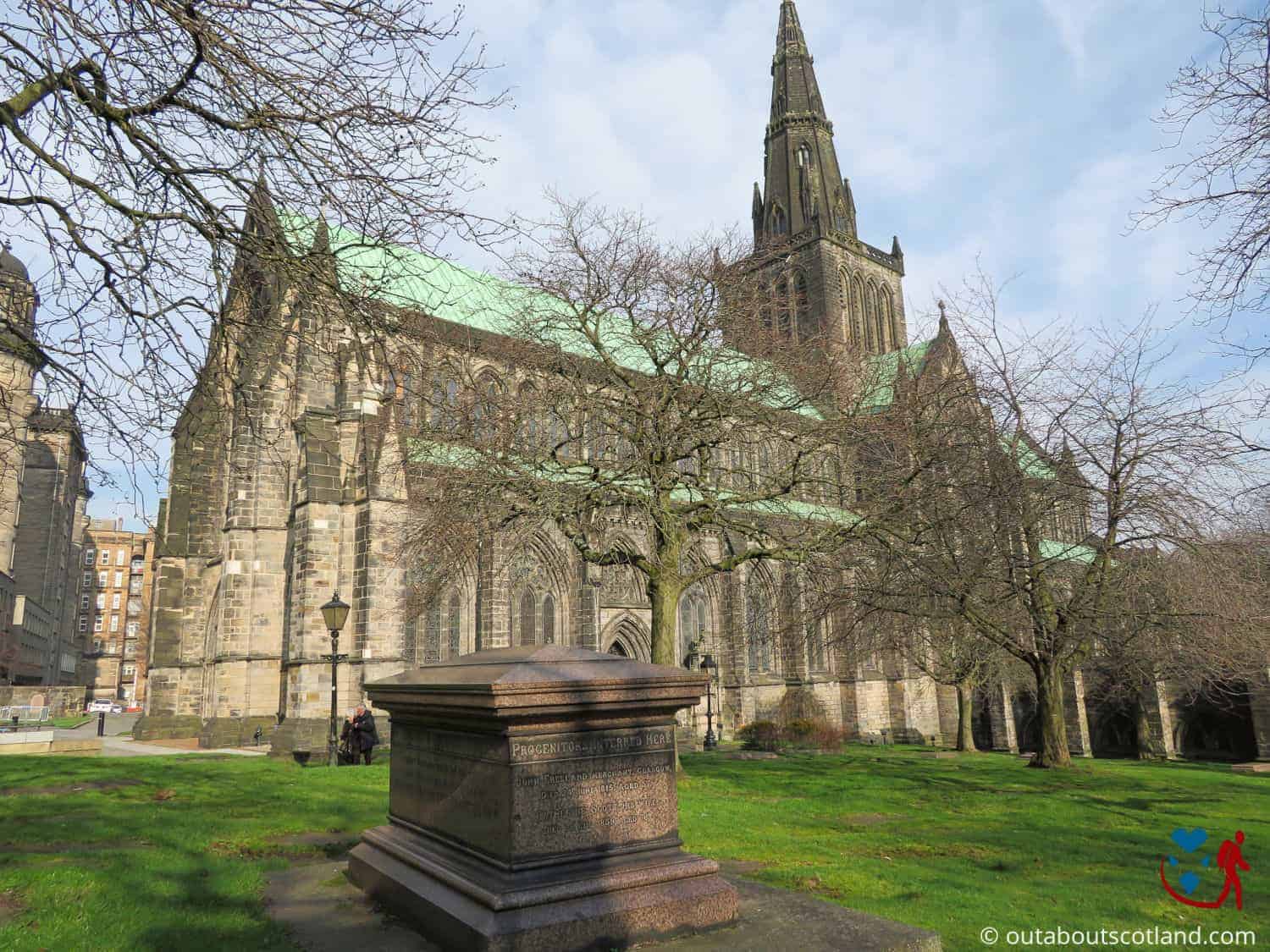
Glasgow boasts the most complete mediaeval cathedral on the Scottish mainland, with a building that features stunning stained-glass windows and incredibly well-preserved ancient chapels. This cathedral (also called St. Kentigern’s or St. Mungo’s Cathedral) is, in my opinion, one of the top places to visit in Glasgow.
The cathedral was built in the 12th century and is one of the finest examples of Gothic architecture in Scotland, which means it attracts hundreds of camera-wielding tourists every day. Thankfully, visitor numbers decrease substantially in January, and I personally prefer visiting it when it’s free of crowds. It’s such an atmospheric place that it deserves peace and quiet to truly enjoy it.
The cathedral is thought to have been built on the site of St. Kentigern’s tomb, which many historians consider the birthplace of Glasgow. There’s a lot to admire about this building, especially the ornate stone carvings which are remarkably well preserved considering they were made nearly one thousand years ago.
The cathedral is absolutely cavernous inside, and even if you’re not remotely religious, you can’t help but feel a wee bit awe-struck by the stained-glass windows, which are among the grandest in Britain. Other highlights include the spooky crypt that was built to house the tomb of St. Kentigern, the Blacader aisle ceiling with its beautiful carved stone bosses, and the seriously ugly gargoyles peeking out from under the rooftop.
Glasgow Cathedral is close to the city centre so it’s easy to get to either on foot or by using public transport, and because it’s so close to The Necropolis (an enormous Victorian cemetery), it’s easy to visit both attractions in a couple of hours. I’d even go so far as to say that these two historic attractions are the most atmospheric in Glasgow, so if you visit them, do yourself a favour and make sure you take your camera.
There are frequent guided tours held by local volunteers that will tell you everything you ever wanted to know about the cathedral, but if you want to wander around it at your own pace you’re completely free to do so. The only thing to remember is that church services are held on Sunday so it might not be possible to visit while they’re running.
Book Tours in Scotland
Kelvingrove Art Gallery and Museum
Out About Scotland visitor guide: Kelvingrove Art Gallery & Museum
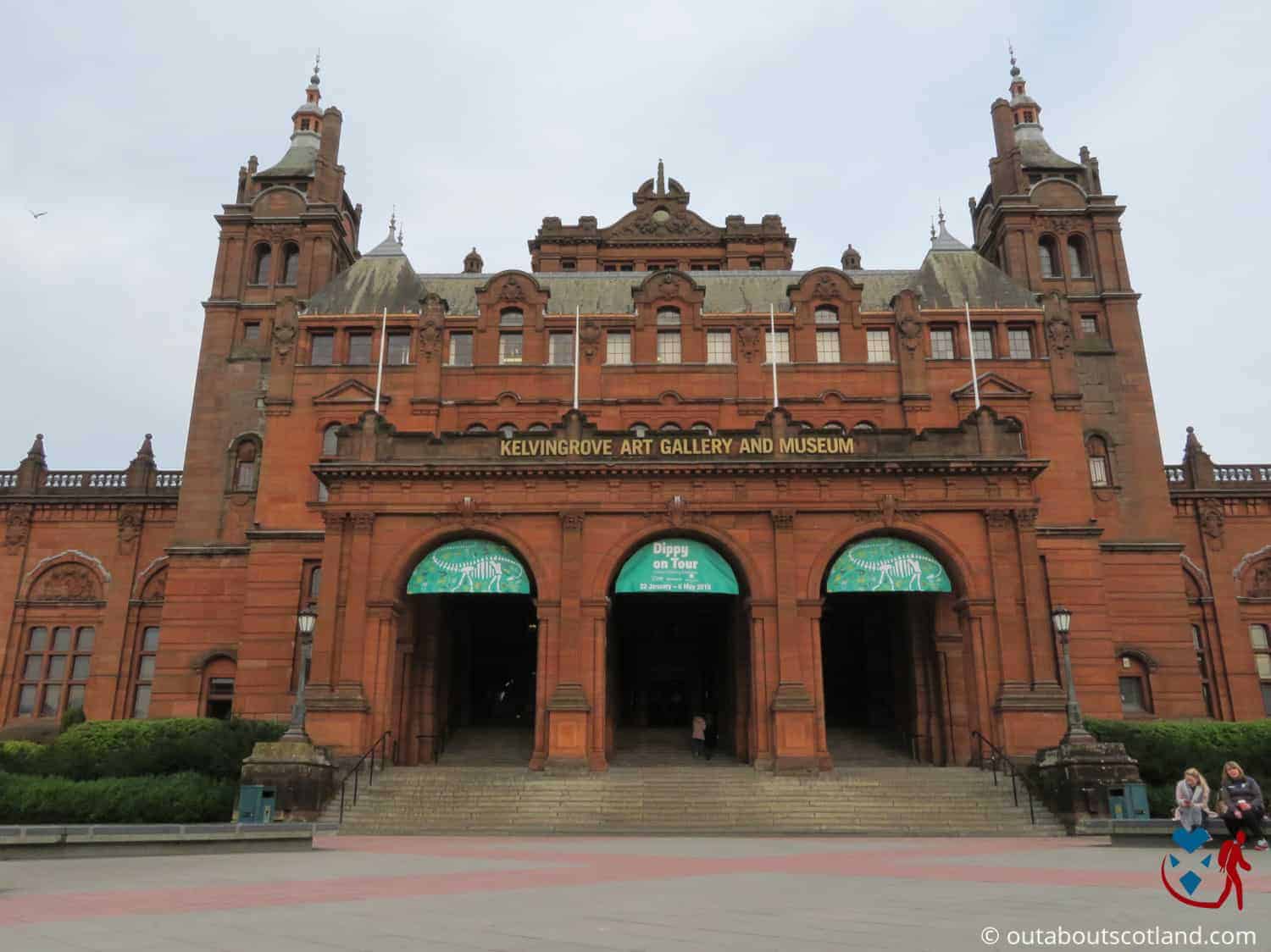
One of the things I love most about Glasgow’s tourist attractions is that the very best ones are completely free, and Kelvingrove, located in the heart of the city, is no exception. Kelvingrove Art Gallery and Museum is the focal point of the beautiful Kelvingrove Park, an 84-acre green space that was created in 1852 as a place of recreation for the city’s residents.
Since it first opened in 1901, this magnificent structure has mesmerised visitors to Glasgow. Inside the museum, you’ll find more than 9,000 artefacts and paintings that depict every aspect of human knowledge, from wildlife and art to Glasgow’s industrial heritage.
Designed to be informative as well as entertaining, Kelvingrove has gained a reputation for being one of the best places in Glasgow for family days out. The constantly changing exhibitions of the museum and art galleries are displayed across multiple different areas, and visitors can enjoy displays that cover themes from modern art, animals, ancient Egypt, Scottish heritage, and everything in between.
There are so many things to see and interact with at this attraction that visitors could easily spend the majority of the day there (which is why it gets so incredibly busy in summer) especially when the surrounding park attracts so many visitors as well. Thankfully, January is much quieter, although it’s still very popular with locals at the weekend.
Glencoe Mountain
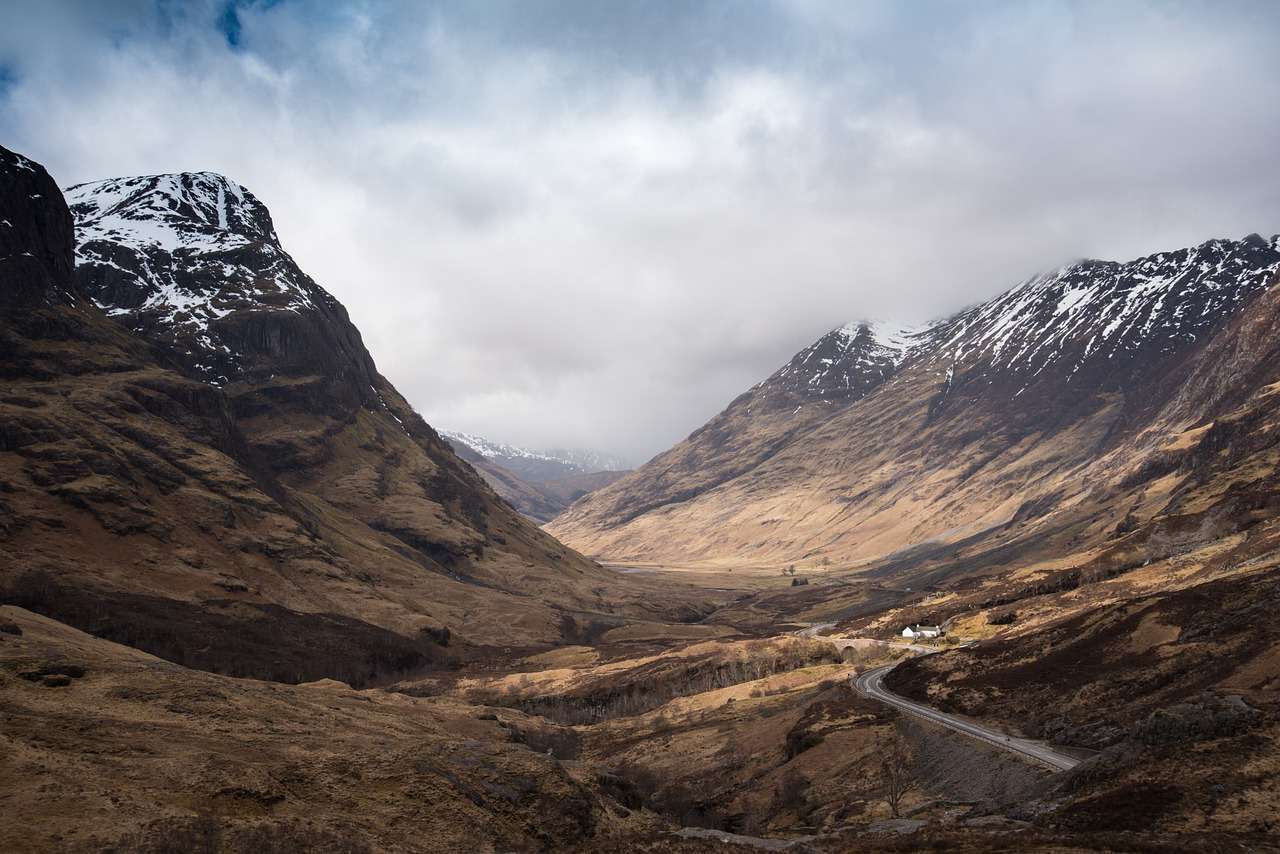
Glencoe Mountain is popular with tourists at all times of the year, thanks to the fantastic walks on offer across nearby Rannoch Moor. However, it’s the winter activities that draw thousands of visitors year after year, all looking to make the most of the extreme sports available at one of Scotland’s top winter destinations.
While you probably won’t be making much use of the camping facilities in January, you can at least get involved with other activities including hillwalking, skiing, snowboarding, and sledging. Glencoe Mountain also has some of the longest ski runs in Scotland, so it’s just as well there are 8 chairlifts to take snow sports enthusiasts back to the top after each downhill race.
The resort at Glencoe is the oldest ski centre in Scotland (established in 1956) and has developed a reputation for being the country’s best destination for experienced skiers. It’s famously home to ‘The Flypaper’ – officially the UK’s steepest run – but in recent years it has become equally popular for the sledging area that allows anyone of any skill level to enjoy the snow.
The facilities on offer are pretty good, though they aren’t quite as big as the centre at Cairngorm. But even so, there are 2 on-site cafés (one with a bar), as well as micro lodges if you fancy staying overnight. The views looking out across Buchaille Etive Mor and Rannoch Moor have to be some of the best in the world to wake up to on a crisp January morning, and they make a visit to this mountain range a necessity for winter tourists.
Not far from Glencoe Mountain (around 10 miles and a 20-minute drive) lies another mountain peak that draws thousands of visitors each winter: Bidean Nam Bian. This mountain is well-known amongst Munro climbers (a Munro is a mountain over 3,000 feet) for the incredible views it offers from the ‘Three Sisters of Glen’Coe’ – the three steep ridges on the north face that extend into the Glen.
The mountain rises 1,150 metres at its highest point and has several ascent routes of varying difficulty, although even the easiest route is a bit of a scramble. You can discover more about Glencoe at The Glencoe Exhibition Centre.
Protect Your Family From Scotland's Biting Midges
- Powerful, reliable protection for up to 8 hours
- Water- and sweat resistant
- Repels midges, mosquitoes, horse flies, sand flies, fleas and ticks
- Safe for use on adults, children over 30 months and pregnant women
- Non-sticky, moisturising with a pleasant fragrance
- Packaging may vary
The Nevis Mountain Range Experience
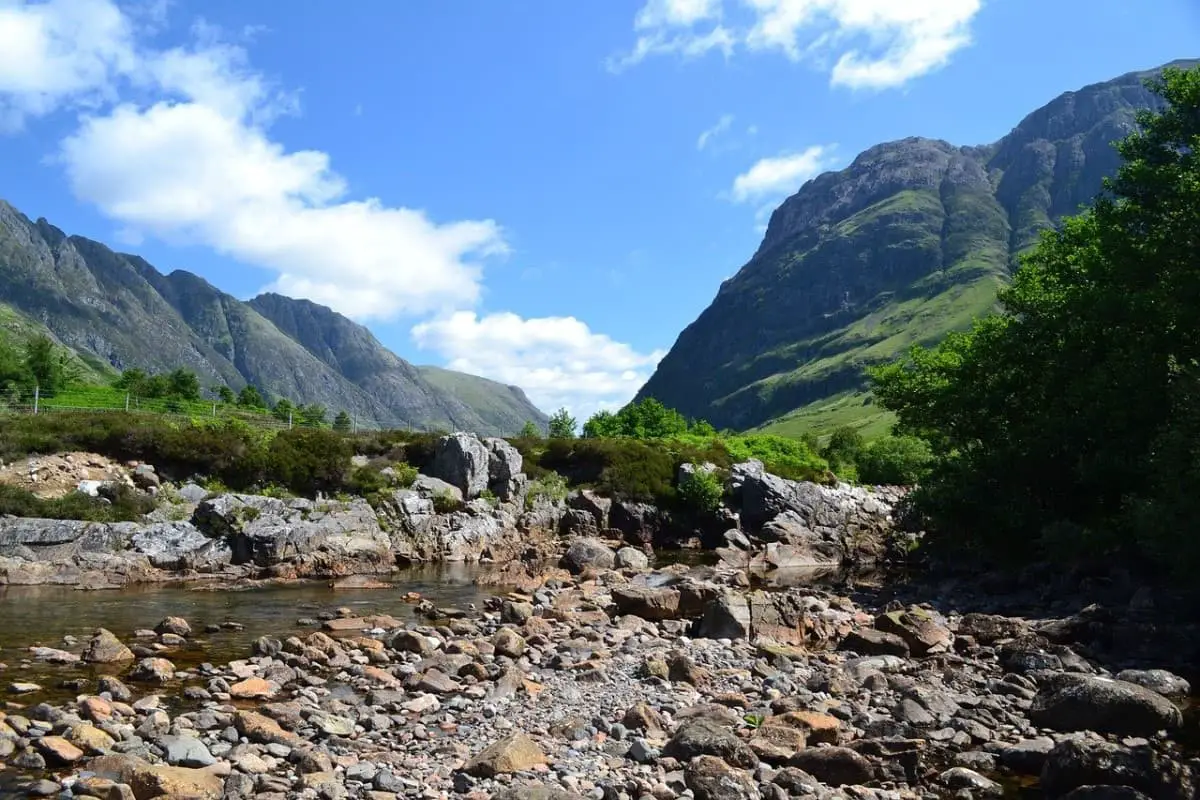
The Nevis Range Mountain Experience Centre, located at the foot of Aonach Mor mountain, is widely regarded as Scotland’s premier adventure destination, a claim you’ll likely find yourself agreeing with once you visit the centre for yourself.
While many people associate Ben Nevis with winter skiing and snowboarding, there are lots of other activities you can get involved with at any time of the year, although visiting this majestic mountain when it’s covered with fresh snowfall has to be at the top of most tourists’ ‘must’-do’ lists.
Ben Nevis is part of the Grampian mountain range in the Scottish Highlands, located near the town of Fort William, which is a major tourist destination itself. Over 125,000 walkers visit Ben Nevis each year to follow the mountain track to the summit, but many tourists also head to the Nevis Mountain Range Experience Centre.
The centre offers a starting point for some of the best downhill mountain bike trails in the country and features enough graded routes down Aonach Mor that visitors will find a challenge, whatever their skill level. The centre also operates a fantastic aerial adventure obstacle course at the edge of the nearby Leanachan forest where children and adults can brave tree swings, balance ropes, and zip wires from heights of just 1.5 metres up to a dizzying 10 metres.
Finally, the centre is home to the only mountain gondola in the UK, a ride that sees visitors whisked up the side of Britain’s 8th highest mountain towards incredible views at the top station, which sits 650 metres above the departure point.
My favourite part about visiting Ben Nevis (even better than the gondola ride) is the Snowgoose restaurant at the top station, which serves locally sourced food and drink from a stunning balcony viewpoint.
Cairngorm Mountain Range
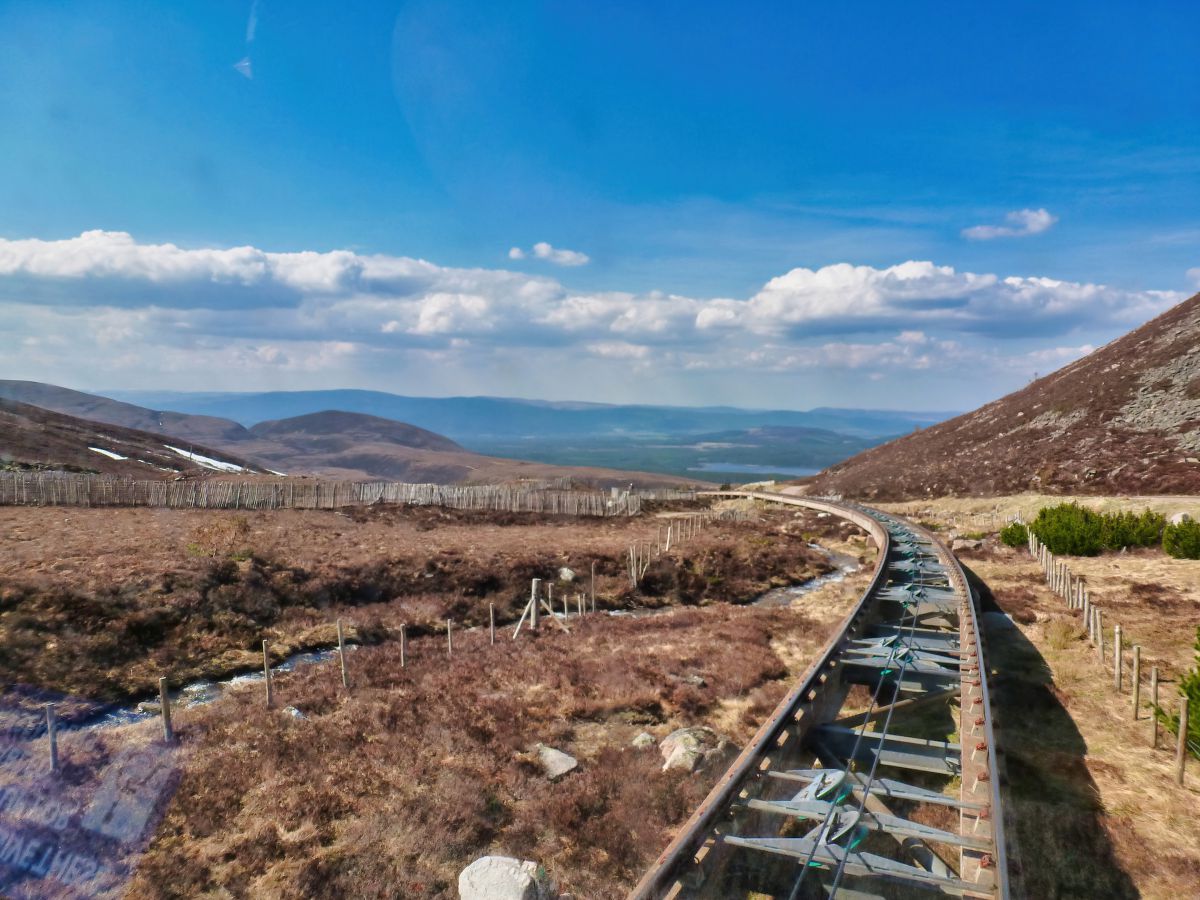
The Cairngorms National Park is part of the Grampian Mountains, the Highland range that occupies nearly half of the region. The area is famous for being one of Scotland’s premier snowsports destinations, and there are lots of activities for visitors to enjoy, including the Cairngorm Mountain Funicular Railway which is the highest railway track in Britain.
A journey in one of these carriages will take you up 462 metres on a 1,970-metre track that presents unrivalled views of one of the finest mountain ranges in Scotland.
Because it’s so popular with adventure-sports enthusiasts the area gets very busy, with around 120,000 visitors enjoying the site each winter. However, numbers drop significantly in the first couple of weeks in January so it’s a great time to experience the best of Scotland’s snowsports without being plagued by crowds of people.
Once you get to the peak of the northern slope of Cairngorm Mountain, you’ll be able to enjoy the scenery that stretches for miles in all directions, with Loch Morlich clearly visible below and the mountain ranges of Cairngorm National Park stretching out into the distance.
The Top Station also has an excellent café and restaurant that serves good food, and there’s a sports outfitter and a gift shop up there as well. The restaurant is particularly noteworthy as it has a viewing terrace that provides amazing panoramic views from 1,200 metres above sea level.
In winter, the mountain is truly spectacular but very windy, and many visitors find it exciting to stand on the terrace and brace themselves against almost non-stop 50-mph winds!
Book Tours in Scotland
The John Muir Way
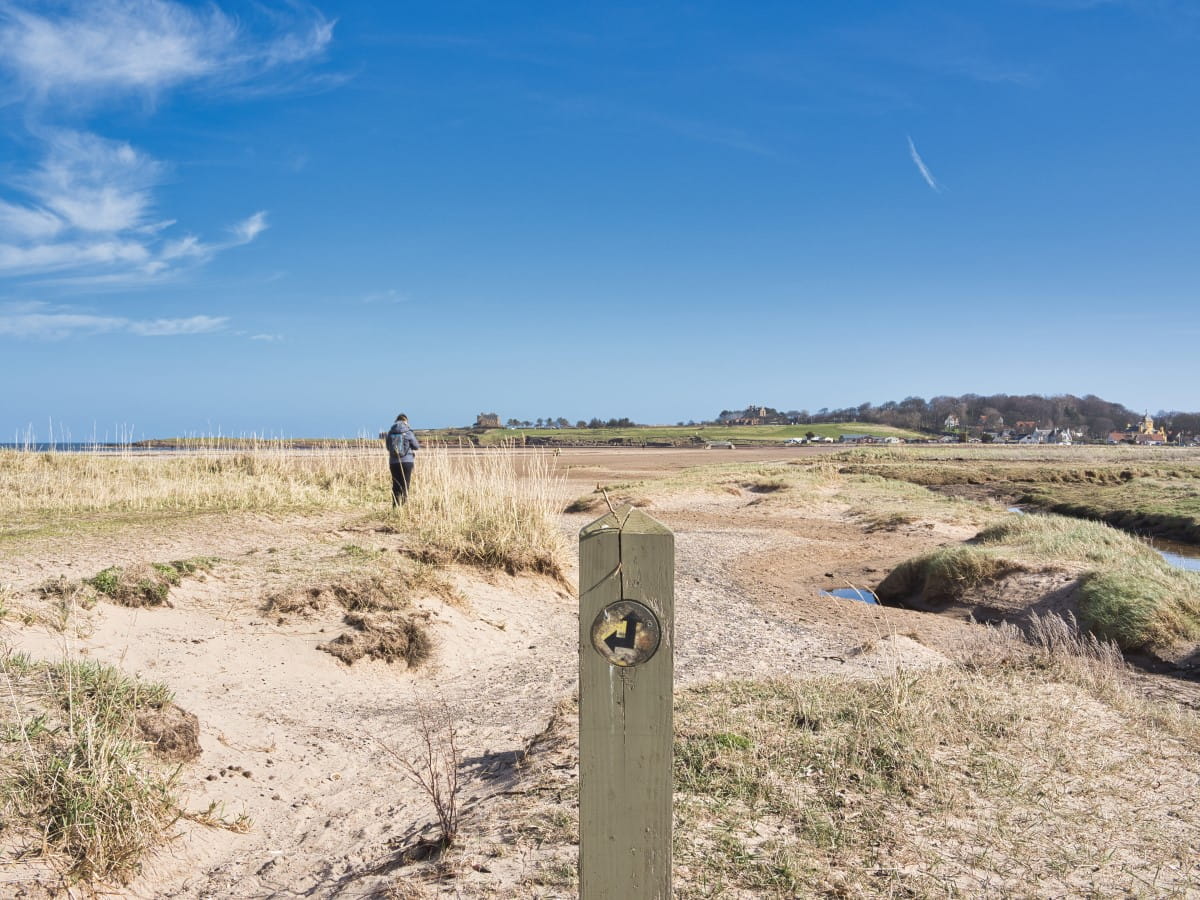
Top of the list of destinations for a winter walk in Scotland has to be the coast-to-coast route of the John Muir Way which stretches 134 miles across the country’s heartland from the coastal village of Helensburgh in the west to the town of Dunbar in the east.
John Muir became famous not only for being a Scottish writer of distinction but also a conservationist, botanist, mountaineer, and explorer, and it was thanks to his work promoting the preservation of the natural world that the very first national parks were created.
This walking trail is named in his honour, and it allows everyone to experience some of the best parts of Scotland either on foot or on a bike, with the trail passing through countryside, coastal towns, villages, and cities. Although the entire route takes around 10 days on foot or 5 days on a bike, you can break it down into much smaller sections that can easily be completed in a single day.
Before you start, make sure you take a look at the official John Muir Way website which details the 10 distinct sections, with each section described alongside an accompanying map.
Winter sees some of the more remote sections of the trail turn into a wee bit of a quagmire, but the section near Edinburgh is perfect for a January walk. This part offers superb views across the Firth of Forth and the coastline at Cramond before heading inland to take in some of the sights of the capital, and it allows visitors to see parts of the city that are well off the usual tourist trails.
Best of all, it’s easy to take a diversion into the city centre if Scotland’s changeable winter weather suddenly closes in.
If you decide you’d like to experience more of the John Muir Way then you might like to think about walking the final stretch of the route from North Berwick to Dunbar which passes close to the John Muir Country Park.
This nature reserve is well-loved for the number of plant species that live in it, and to date, over 400 different varieties have been recorded. It’s also a prime site for birdwatchers thanks to the different habitats that include sand dunes, salt marshes, beaches, and woodland.
Cardrona Forest
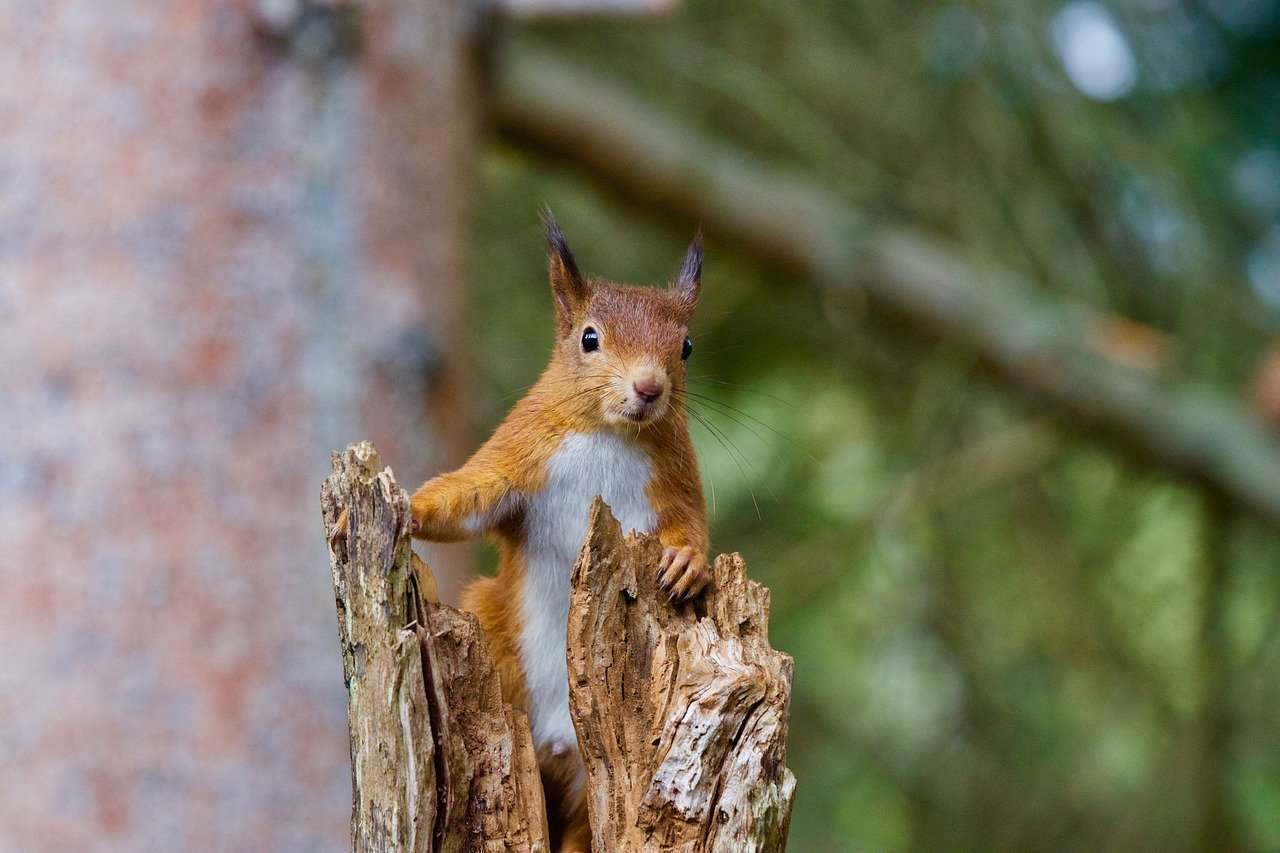
Scotland is a fantastic place to explore, and it’s always worth leaving behind the usual tourist trails and getting out to see the places that the locals know about but tourists often miss. Sitting firmly in this category is Cardrona, a large forest close to the Scottish Borders town of Peebles that offers tranquil walks through the Tweed Valley forest park.
Although Cardrona is less than 2 hours away from the hustle and bustle of Edinburgh it has to be one of the most peaceful places in the country, although if you want to get active you’ll also find some really good mountain biking and horse riding trails cutting through the forest.
Three superb trails run through Cardrona. There’s the Burn Trail which offers an easy walk along the Kirk Burn (a river), The Kirkburn Trail which has great views of the surrounding Tweed Valley, and Wallace’s Trail which runs past Cardrona Tower. All walks come highly recommended and I guarantee they’ll make you fall in love with the Scottish Borders, especially if it’s a sunny day.
The entire Tweed Valley forest park is a nature lover’s paradise with a wealth of bird life flitting through the trees and shy red squirrels jumping between the branches. Red squirrels have had their numbers decimated in recent years due to the invasion of larger greys, but thankfully there are a few places in Scotland where their populations are strong, including Cardrona forest.
Over 75% of the UK’s entire red squirrel population lives in Scotland, so if you want to see them, the forests of Tweed Valley are a great place to visit.
One particularly interesting feature of the forest is the 16th-century Cardrona Tower, which, although in ruin, is home to a colony of bats, so if you don’t mind staying in the forest after dark, you can watch them on the hunt for food as soon as dusk settles.
Protect Your Family From Scotland's Biting Midges
- Powerful, reliable protection for up to 8 hours
- Water- and sweat resistant
- Repels midges, mosquitoes, horse flies, sand flies, fleas and ticks
- Safe for use on adults, children over 30 months and pregnant women
- Non-sticky, moisturising with a pleasant fragrance
- Packaging may vary
Frequently Asked Questions
What is January’s weather like in Scotland?
Average temperatures: South 0 °C to 5 °C. North 0 °C to 5 °C. East -1 °C to 5 °C. West 1 °C to 6 °C.
Average rainfall: South 19 days, 7 inches. North 20 days, 8 inches. East 16 days, 5 inches. West 19 days, 8 inches.
What are the sunrise and sunset times during January in Scotland?
January 1st: Sunrise 08:54. Sunset 16:03. Daylight hours 7 hours 9 minutes.
January 15th: Sunrise 08:44. Sunset 16:25. Daylight hours 7 hours 41 minutes.
January 31st: Sunrise 08:20. Sunset 16:57. Daylight hours 8 hours 37 minutes.
When is Burns Night in Scotland?
Burns Night is traditionally held annually on the 25th of January which was the birthdate of the Scottish poet Robert Burns who was born in 1759.
Is it dangerous to go mountain hiking in Scotland in January?
Hiking is possible as long as the appropriate cold-weather gear is worn and safety guidelines are adhered to. As an example, the average winter temperature on the Ben Nevis mountain range is 0 °C without taking wind chill into consideration.
Does it snow in Scotland in January?
Yes, it can snow in Scotland in January. The weather in Scotland is generally cool and wet, and snow is a common occurrence during the winter months.
The amount of snowfall can vary widely from year to year and from region to region, but it’s not uncommon for parts of Scotland (especially the Highlands) to receive significant snowfall during the winter months, including in January.



